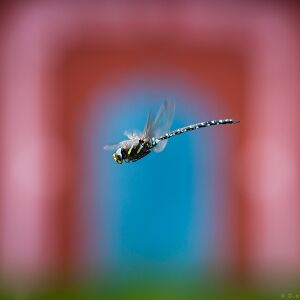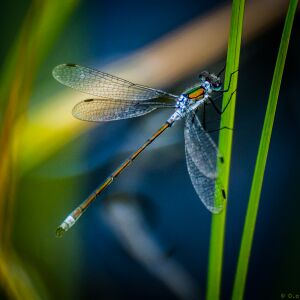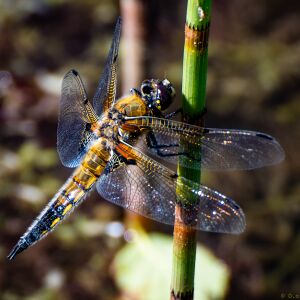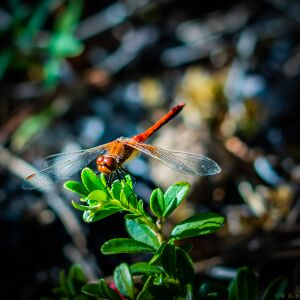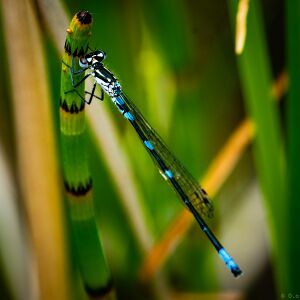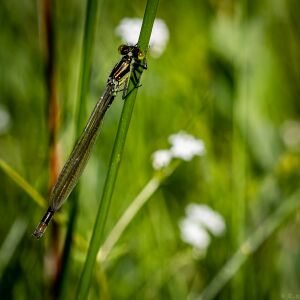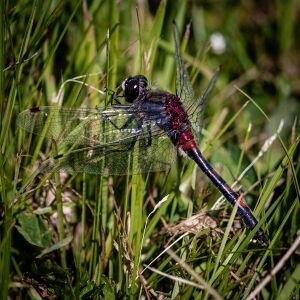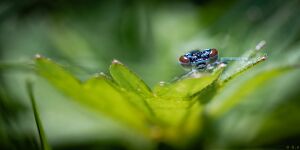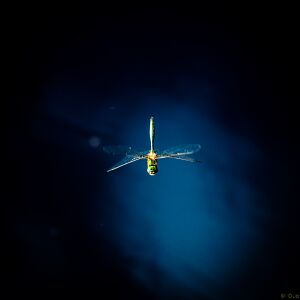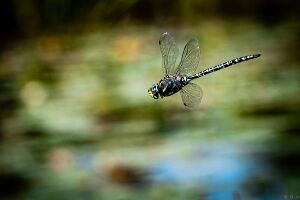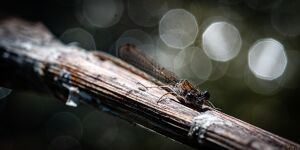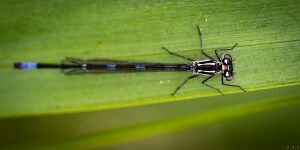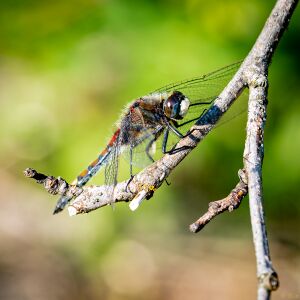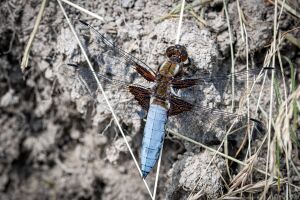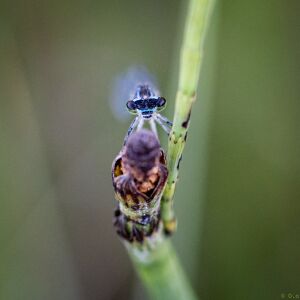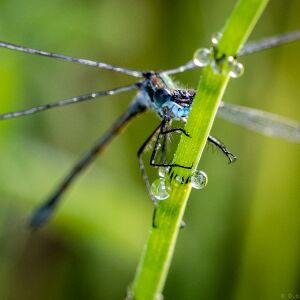Dragonflies: Difference between revisions
(article from Uneven Eyes (2020-01-08)) |
(added article from Uneven Eyes (2021-04-19)) |
||
| Line 74: | Line 74: | ||
It started years ago with a dragonfly in flight and got ends the same way. I learned a few lessons on the way. Patience is needed, having an idea is important, but absolutely crucial is the knowledge of the subject. Which is probably why I prefer to take pictures of people - the knowledge of the subject is much easier to obtain... and people are cooperative on a photoshoot. The same - sadly - cannot be said about nature ;) | It started years ago with a dragonfly in flight and got ends the same way. I learned a few lessons on the way. Patience is needed, having an idea is important, but absolutely crucial is the knowledge of the subject. Which is probably why I prefer to take pictures of people - the knowledge of the subject is much easier to obtain... and people are cooperative on a photoshoot. The same - sadly - cannot be said about nature ;) | ||
== Dragonflies of 2020 == | |||
With the above explanation of how I got my ''hobby within a hobby'', it should be no surprise that I spent quite a big part of the summer of 2020 chasing insects. | |||
The season started in the Botanic Garden of Turku in late May, with first sights of Sympecma paedisca. That is one of the only two species that can survive winter in their adult form. They are rather peaceful and a very good and forgiving subject. It seemed that their favourite spots are dry reed near water, resulting in beautiful bokeh in the background. | |||
[[File:Dragonflies-2020-1.jpg|thumb|center|Sympecma paedisca]] | |||
Next I tried a different location - Kuusisto, very close to Turku. There I had a chance to watch ''Coenagrion pulchellum'' hunting. I have to say I have been blown away by how swift and fast those insects are. While I obviously failed to capture a moment mid-air, I was lucky enough to take a picture of a damselfly enjoying its lunch. | |||
[[File:Dragonflies-2020-2.jpg|thumb|center|Coenagrion pulchellum - eating a fly]] | |||
With June in full swing I returned to Ruissalo and captured an image I am really proud of. The symmetry in the pose is just breath-taking. However, I was unable to identify the species - I think it is ''Coenagrion pulchellum'' (again), but I am not sure. | |||
[[File:Dragonflies-2020-3.jpg|thumb|center|Behold, Perfection (Coenagrion pulchellum ?)]] | |||
I also had a chance to play hide and seek with yet another unknown damselfly species. I presume it is a female of some species, but I have - again - no idea which one it is. I did not find anything similar to that particular insect anywhere in the Botanical Garden, but I just might have been unlucky. | |||
[[File:Dragonflies-2020-4.jpg|thumb|center|Hide and Seek]] | |||
However, I did find a few dragonflies, one of them being ''Leucorrhinia dubia''. It has very distinct red and brown marks on the tail, making it easy to spot. | |||
[[File:Dragonflies-2020-5.jpg|thumb|center|Leucorrhinia dubia (?)]] | |||
Next up (still in late June) I noticed ''Libellula depressa'', not that far away from my home. Strangely enough, no water was found nearby. I guess the distances the dragonflies travel are much larger than I gave them credit for - and apparently their territory may be quite far from water. | |||
[[File:Dragonflies-2020-6.jpg|thumb|center|Libellula depressa]] | |||
Of course, there are only so many species of dragonflies and damselflies in the Botanical Garden, so again I started looking for ways of photographing them in unusual ways. For example, this picture of ''Coenagrion lunulatum'' is taken en face. Wonderfully low depth of field blurs everything else, turning the rest of the body into a colourful halo. | |||
[[File:Dragonflies-2020-7.jpg|thumb|center|Coenagrion lunulatum (?)]] | |||
Later during the summer (in August) I encountered what I think is ''Sympetrum flaveolum''. Quite a swarm of those occupied a playground - again, considerably far away from the nearest water source. Those dragonflies were very patient and I could get really close without disturbing them. | |||
[[File:Dragonflies-2020-8.jpg|thumb|center|Sympetrum flaveolum (?)]] | |||
In mid-August I decided to try an early morning excursion to the Botanical Garden and was rewarded with a few shots of ''Lestes sponsa'' surrounded by water droplets. I have to say that while it was a stretch for me (I am not a morning person), the results were very rewarding. I will probably do a similar thing in the future. | |||
[[File:Dragonflies-2020-9.jpg|thumb|center|Lestes sponsa]] | |||
Of course, during the same walk I captured a few typical damselfly shots. Due to relatively late summer (mid-August) there were not that many spieces left around. | |||
[[File:Dragonflies-2020-10.jpg|thumb|center|Lestes sponsa (? f)]] | |||
The results of 2020 dragonfly hunting were really promising and made me have plans for more in the years to come. I have scouted a few locations that I have not been to previously, including the wonderful Teijo National Park near Salo and the Littoinen lake in Turku. I know there will be a few dragonflies I have not yet captured and really look forward to some memorable shots. | |||
[[Category:In English]] | [[Category:In English]] | ||
[[Category:Photography]] | [[Category:Photography]] | ||
Latest revision as of 13:45, 26 October 2022
Of Damsels and Dragons
The best predators in the entire animal kingdom. One of the few relics of the past: dragonflies. And damselflies, too.
Of all the non-human subjects, dragonflies and damselflies are my absolute favourite. If you can have a hobby within a hobby, then taking pictures of dragonflies is mine.
It all started at the last day of August 2014, in Ruissalo Botanical Garden in Turku. I was enjoying a beautiful summer and decided to take a few shots of dragonflies, as there were literally everywhere around me. And so I captured this image.
Everything lined up perfectly and resulted in once in a lifetime photo: the dragonfly and the background are perfectly aligned, the focus is perfect, the insect is in flight, and I made only one attempt. I tried to repeat the shot over the years, but failed.
Anyway, I showed the photo to some people, and one of them asked the question that had to be asked. What dragonfly is this? Seriously, I had no idea. I had to dig it up - a quick read of a few articles on Wikipedia indicated that it is one of the hawkers (Aeshnidae). The answer was enough back then.
On the same day I also photographed another colourful insect, this time it was stationary.
And that is how I learned about a distinction in English between dragonflies and damselflies. The one above is a damselfly, common spreadwing.
(Side note from now smarter me: for a moment I thought it is L. virens, small spreadwing, however they do not appear in southern Finland. Plus, small spreadwings have brown pterostigmata.)
These two pictures, however, failed to fuel my interest in dragonflies - I realised how beautiful those insects are, sure, but was not bothered to take more pictures. Almost four years later (in May 2018), with another dragonfly photo, my hobby became a bit more real.
The above picture is a little blurry - the focus is incorrect, I know. It is not the point of it to be technically correct - what intrigued me was another question: 'What dragonfly is this?
Clearly, it is not a hawker, it is way too small, and the colours do not match. I began reading Wikipedia again and finally came across a photo there that matched mine.
Few months later, towards the end of the summer (in August), I went to the Ruissalo Botanical Garden again, this time with a clear goal to photograph a few dragonflies. You can imagine my disappointment when I found... almost none. The season was over, most insects laid their eggs and died. My ignorance of not knowing the yearly cycle of dragonflies and damselflies was apparent ;)
Fortunately, I captured one dragonfly near my home, so the excursion was not an absolute disaster.
(Another side note from a smarter me: for a moment I thought it to be a scarlet dragonfly, which is currently at the phase of expanding its habitat to northern Europe, but the shape of the tail and two dark spots on it indicate it is a ruddy darter.)
The disappointment caused by a pointless trip to Ruissalo resulted in me vowing to be more prepared next season. I started reading about the yearly cycle, the differences in habitats and preferences of different dragonflies, so when the year 2019 arrived, I was ready.
I started in June, in Ruissalo, again.
I knew that northern damselflies (and other Coenagrionidae) are among the first to show up - and I was not disappointed. There were plenty of those flying around, and few were kind enough to strike a pose and not fly away. Similarly to other species of animals, male and female insects can differ vastly in size and colour. For example, a female of the northern damselfly is green in colour, a vivid contrast to the blue male. Needless to say, it is very difficult to capture it in all the greenery around it.
I repeated the journey a week later only to find more species available, like some of the larger species - including white-faced darters. Contrary to their name, their distinctive characteristic is their deep red colour (they do have white face, you just do not notice it first).
If you ever wondered, dragonflies spend most of their life in their larval form, and only the last few months as the commonly known flying predator. During their transformation they crawl up from water and breach out, leaving dry exuviae where it was.
While I was looking around, I tried to come up with a less documentary approach to dragonflies. Here is what I ended up with.
To me, this picture carries the same uneasy feeling I get when looking at a shark or a crocodile. It also looks beautiful, with nice blurry background and the only non-green, sharp subject being the insect's face.
Few weeks later I visited Kurjenrahka National Park, a little north from Turku. To my delight, there were dragonflies there as well.
This particular one - unfortunately, I do not know the species - was caught mid-flight over a small river. This photo took a while - the background is mostly dark, with only a middle part of the water being lit by sun. I stood there for quite some time, patiently waiting for an insect to fly and stop for long enough to take a picture. I am not truly happy with the end result, but that was the best of the bunch.
I promised myself to get better next time and decided to try and do a panning shot of a dragonfly. Late August, towards the end of the beautiful summer, I finally managed to take one where the dragonfly was sharp and focused, and the background was blurry and moving.
This ends the story of how I got interested in dragonflies and damselflies.
It started years ago with a dragonfly in flight and got ends the same way. I learned a few lessons on the way. Patience is needed, having an idea is important, but absolutely crucial is the knowledge of the subject. Which is probably why I prefer to take pictures of people - the knowledge of the subject is much easier to obtain... and people are cooperative on a photoshoot. The same - sadly - cannot be said about nature ;)
Dragonflies of 2020
With the above explanation of how I got my hobby within a hobby, it should be no surprise that I spent quite a big part of the summer of 2020 chasing insects.
The season started in the Botanic Garden of Turku in late May, with first sights of Sympecma paedisca. That is one of the only two species that can survive winter in their adult form. They are rather peaceful and a very good and forgiving subject. It seemed that their favourite spots are dry reed near water, resulting in beautiful bokeh in the background.
Next I tried a different location - Kuusisto, very close to Turku. There I had a chance to watch Coenagrion pulchellum hunting. I have to say I have been blown away by how swift and fast those insects are. While I obviously failed to capture a moment mid-air, I was lucky enough to take a picture of a damselfly enjoying its lunch.
With June in full swing I returned to Ruissalo and captured an image I am really proud of. The symmetry in the pose is just breath-taking. However, I was unable to identify the species - I think it is Coenagrion pulchellum (again), but I am not sure.
I also had a chance to play hide and seek with yet another unknown damselfly species. I presume it is a female of some species, but I have - again - no idea which one it is. I did not find anything similar to that particular insect anywhere in the Botanical Garden, but I just might have been unlucky.
However, I did find a few dragonflies, one of them being Leucorrhinia dubia. It has very distinct red and brown marks on the tail, making it easy to spot.
Next up (still in late June) I noticed Libellula depressa, not that far away from my home. Strangely enough, no water was found nearby. I guess the distances the dragonflies travel are much larger than I gave them credit for - and apparently their territory may be quite far from water.
Of course, there are only so many species of dragonflies and damselflies in the Botanical Garden, so again I started looking for ways of photographing them in unusual ways. For example, this picture of Coenagrion lunulatum is taken en face. Wonderfully low depth of field blurs everything else, turning the rest of the body into a colourful halo.
Later during the summer (in August) I encountered what I think is Sympetrum flaveolum. Quite a swarm of those occupied a playground - again, considerably far away from the nearest water source. Those dragonflies were very patient and I could get really close without disturbing them.
In mid-August I decided to try an early morning excursion to the Botanical Garden and was rewarded with a few shots of Lestes sponsa surrounded by water droplets. I have to say that while it was a stretch for me (I am not a morning person), the results were very rewarding. I will probably do a similar thing in the future.
Of course, during the same walk I captured a few typical damselfly shots. Due to relatively late summer (mid-August) there were not that many spieces left around.
The results of 2020 dragonfly hunting were really promising and made me have plans for more in the years to come. I have scouted a few locations that I have not been to previously, including the wonderful Teijo National Park near Salo and the Littoinen lake in Turku. I know there will be a few dragonflies I have not yet captured and really look forward to some memorable shots.
